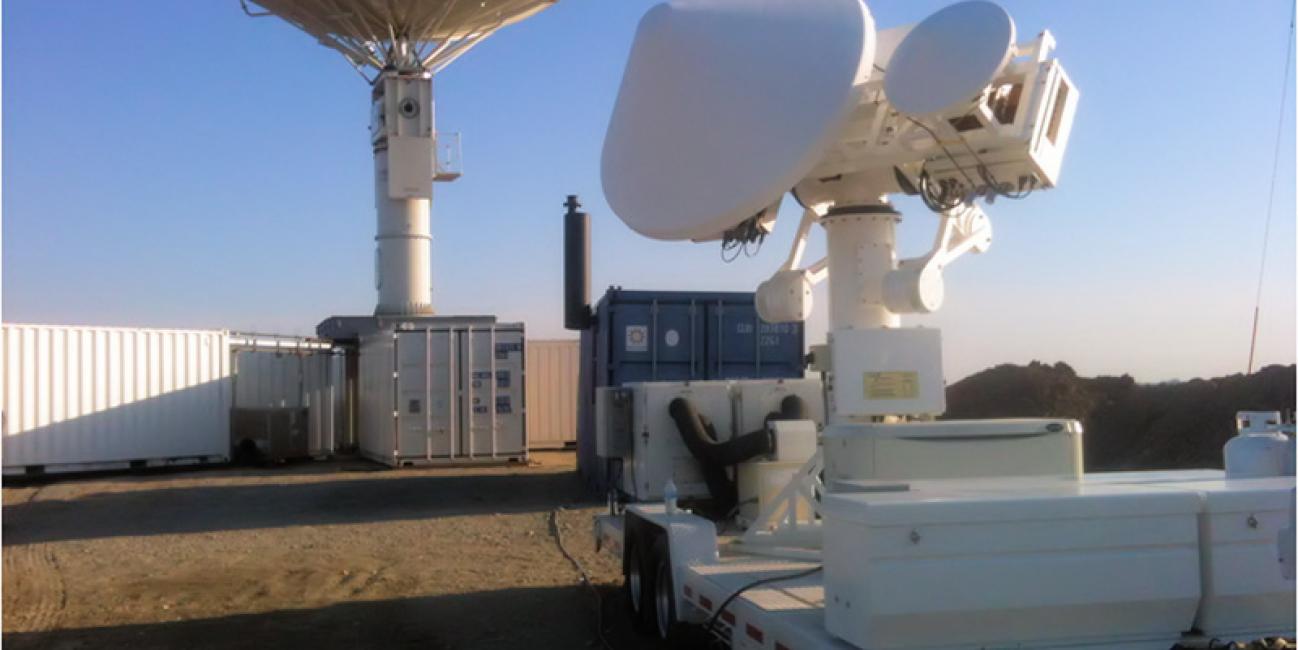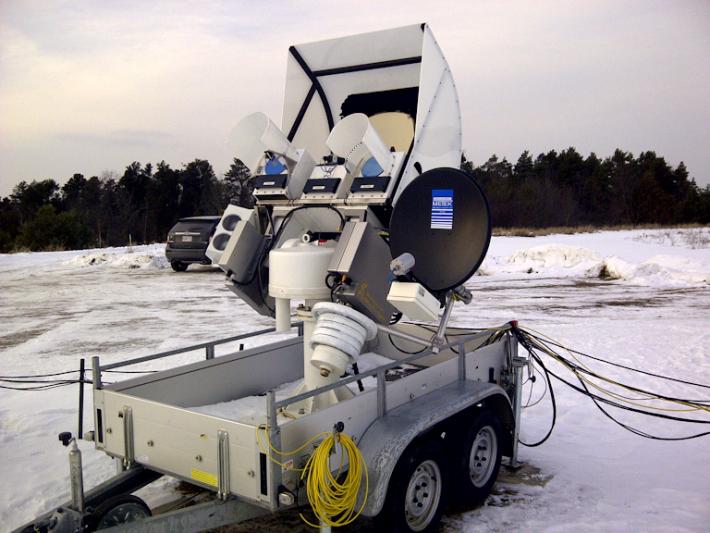
Ground Validation and GPM
The Global Precipitation Measurement (GPM) Core Observatory, launched on Feb. 27, 2015, from Tanegashima Space Center in Japan, will help advance our understanding of Earth's water and energy cycles, improve the forecasting of extreme events that cause natural disasters, and extend current capabilities of using satellite precipitation information to directly benefit society.
The GPM mission will provide unprecedented data on rain and snowfall. The science instruments on the GPM Core Observatory will provide data that will yield the greatest clarity on rain and snow yet gathered from orbiting spacecraft.
With GPM, scientists will gather vast amounts of precipitation data on a global scale. But, how do they know how to interpret the data? How do scientists know the data is correct?
This is where ground validation contributes to the mission. Using instruments that complement and correlate with those on the spacecraft, scientists on the ground gather similar precipitation data. These data are directly compared with that from satellites to improve the models relying on the satellite data.

The NASA NPOL (left) and D3R (right) precipitation radars deployed south of Waterloo, Iowa, for the Iowa Flood Studies ground measurement campaign. Image Credit: NASA/Matt Schwaller
Walt Petersen, GPM ground validation scientist from NASA's Wallops Flight Facility at Wallops Island, Va., said, "GPM ground validation is the process by which we identify uncertainties in satellite-based precipitation products compared to ground observations, improve satellite-based methods of estimating precipitation by better understanding precipitation physics and how this physics relate to what the instruments 'see,' and assess the utility of GPM products in monitoring the global water cycle, flood and weather prediction, and understanding climate change."
The GPM program uses remote campaigns and a Precipitation Science Research Facility at Wallops to supplement and correlate the data gathered by Earth-orbiting satellites.
"Ground validation is central to understanding the quality of GPM precipitation products, how the products can be improved, and evaluating the utility of the measurements in a variety of earth system science applications," Petersen said.
The remote campaigns, using instrumented aircraft and ground-based instruments, allow scientists to monitor precipitation under a variety of conditions and geographic regions.

The University of Bonn ADMIRARI Radiometer deployed during the GPM Cold-season Precipitation Experiment in southern Ontario. The instrument measures microwaves that are naturally emitted from Earth's surface to determine water vapor and cloud and liquid water in the air column.Image Credit: NASA/Walt Petersen
These campaigns have included the Pre-CHUVA experiment to study rain in 2009 in Brazil; the 2010 Finland Light Precipitation Validation Experiment to study high-latitude, cold, light rain; the Mid-latitude Continental Convective Clouds Experiment in central Oklahoma in 2011 to support rainfall measurements; GPM Cold Season Precipitation Experiment in 2012 conducted over and near Ontario, Canada, to support snowfall measurements; and in 2013 scientists conducted the Iowa Flood Studies experiment over a six-week period to evaluate how well GPM rainfall data can be used for flood forecasting.
Later this year, the ground validation team will be heading to North Carolina to conduct the Integrated Precipitation and Hydrology Experiment to characterize warm season precipitation regimes and the relationship between precipitation regimes and hydrologic processes in regions of complex terrain.
According to Petersen, "Field campaigns collect targeted observations of precipitation physical properties in locations or regimes where specific precipitation types occur and can be well studied and where uncertainties either exist or are expected to exist in GPM precipitation products. This information provides a better understanding of precipitation characteristics, how those characteristics relate to uncertainties in the products, and a foundation for improving the method(s) by which we estimate precipitation from both space- and ground-based measurements."

This image of falling snowflakes was taken by the Snow Video Imager (SVI) during the GPM Cold-season Precipitation Experiment. The snowflakes can be seen here in different three-dimensional orientations at 5x magnification. Image Credit: NASA/Larry Bliven
In addition to the field campaigns, the program uses an array of gauges and radar systems on the eastern shore of Maryland and Virginia to gather precipitation data – rain or snow – year round.
Petersen said, "The Wallops Precipitation Research Facility collects multi-frequency dual-polarimetric radar observations of precipitation rates, types, sizes and shapes through the depth of the troposphere. We collect high quality, concentrated rain gauge network measurements of area-mean rainfall, and use networks of imaging instrumentation to observe the number and distributions of the size, shape and type of precipitation particles falling to ground. Collectively, these measurements enable us to describe precipitation physical properties over scales ranging from that of an individual rain drop or snowflake to that of the Delmarva and Chesapeake Bay regions."
With ground validation, scientist will be able to gauge the quality of Earth observations from space using GPM and improve combined space- and ground-based data products used to understand global precipitation.
NASA monitors Earth's vital signs from land, air and space with a fleet of satellites and ambitious airborne and ground-based observation campaigns. NASA develops new ways to observe and study Earth's interconnected natural systems with long-term data records and computer analysis tools to better see how our planet is changing. The agency shares this unique knowledge with the global community and works with institutions in the United States and around the world that contribute to understanding and protecting our home planet.
For more information about GPM, visit:
For more information about NASA's Earth science activities in 2014, visit:

